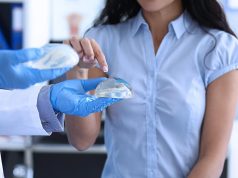More than twofold increase in risk seen for those treated with ≥200 mg/m² cumulative doxorubicin versus no doxorubicin
By Elana Gotkine HealthDay Reporter
TUESDAY, Sept. 19, 2023 (HealthDay News) — For female survivors of childhood cancer, the risk for subsequent breast cancer (SBC) is more than twofold higher for those who receive a cumulative dose of 200 mg/m² or more of doxorubicin compared with those who never receive doxorubicin, according to a study published online Sept. 11 in Nature Medicine.
Yuehan Wang, from the Princess Máxima Center for Pediatric Oncology in Utrecht, Netherlands, and colleagues pooled individual patient data for 17,903 female childhood cancer survivors from six studies, of whom 4.4 percent developed an SBC, to assess associations with individual anthracycline agents and any interactions with chest radiotherapy.
The researchers observed a dose-dependent increased risk for SBC for doxorubicin (hazard ratio, 1.24 per 100 mg/m²), with more than a twofold increase for those treated with 200 mg/m² or more cumulative doxorubicin versus no doxorubicin (hazard ratios, 2.50, 2.33, and 2.78 for 200 to 299, 300 to 399, and ≥400 mg/m², respectively). Hazard ratios per 100 mg/m² doxorubicin were 1.11 and 1.26 for patients treated with or without chest irradiation, respectively. Increased SBC risk was also seen in association with epirubicin (yes/no: hazard ratio, 3.25). The associations for daunorubicin were not statistically significant.
“Our findings support that it may be reasonable to initiate early breast cancer screening in female childhood cancer survivors who have received ≥200 mg/m² cumulative doxorubicin dose,” the authors write. “We believe that the results of our study should be considered in updates of the SBC surveillance guidelines for survivors and can inform future treatment protocols for newly diagnosed childhood cancer patients.”
Copyright © 2023 HealthDay. All rights reserved.








